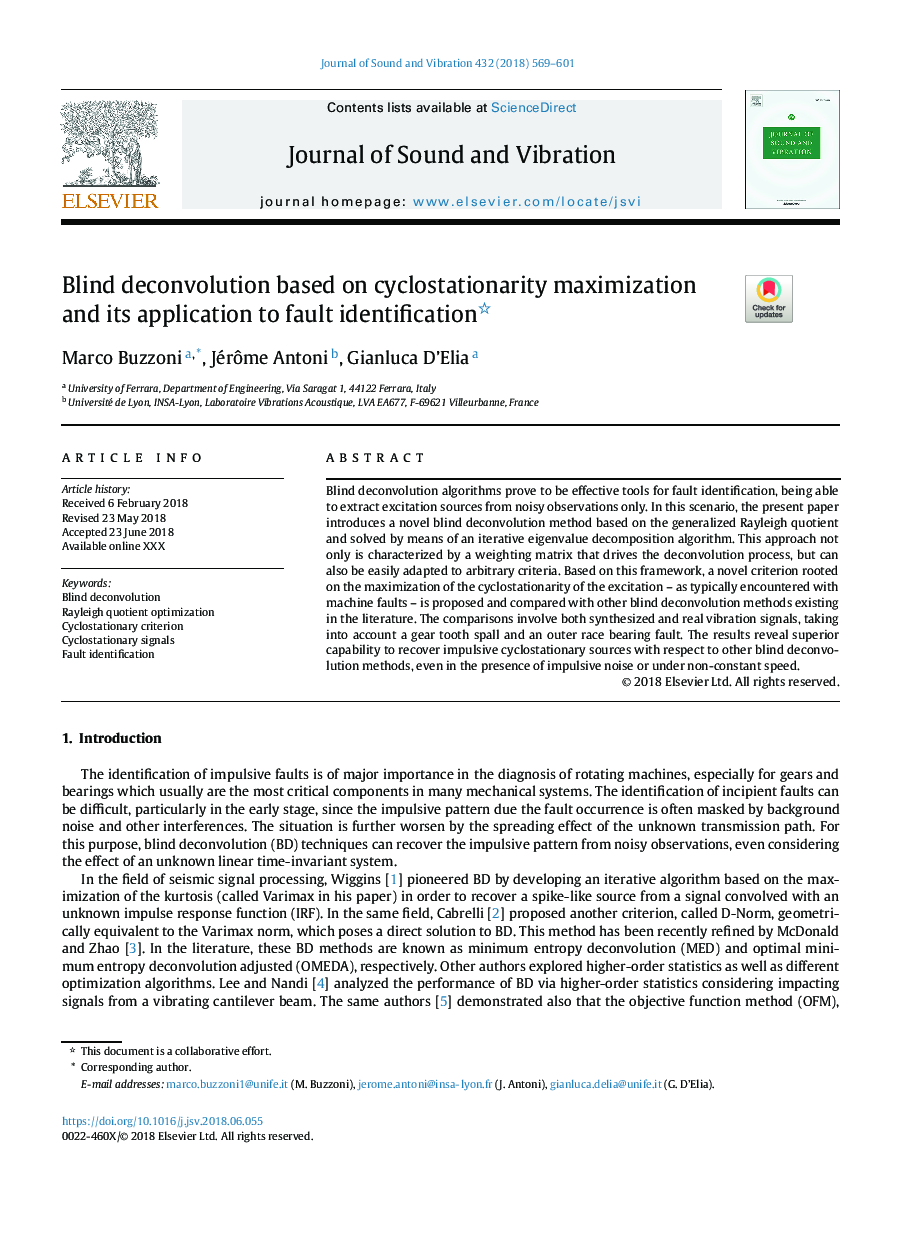| Article ID | Journal | Published Year | Pages | File Type |
|---|---|---|---|---|
| 6752839 | Journal of Sound and Vibration | 2018 | 33 Pages |
Abstract
Blind deconvolution algorithms prove to be effective tools for fault identification, being able to extract excitation sources from noisy observations only. In this scenario, the present paper introduces a novel blind deconvolution method based on the generalized Rayleigh quotient and solved by means of an iterative eigenvalue decomposition algorithm. This approach not only is characterized by a weighting matrix that drives the deconvolution process, but can also be easily adapted to arbitrary criteria. Based on this framework, a novel criterion rooted on the maximization of the cyclostationarity of the excitation - as typically encountered with machine faults - is proposed and compared with other blind deconvolution methods existing in the literature. The comparisons involve both synthesized and real vibration signals, taking into account a gear tooth spall and an outer race bearing fault. The results reveal superior capability to recover impulsive cyclostationary sources with respect to other blind deconvolution methods, even in the presence of impulsive noise or under non-constant speed.
Related Topics
Physical Sciences and Engineering
Engineering
Civil and Structural Engineering
Authors
Marco Buzzoni, Jérôme Antoni, Gianluca D'Elia,
